LIRIS Image Quality
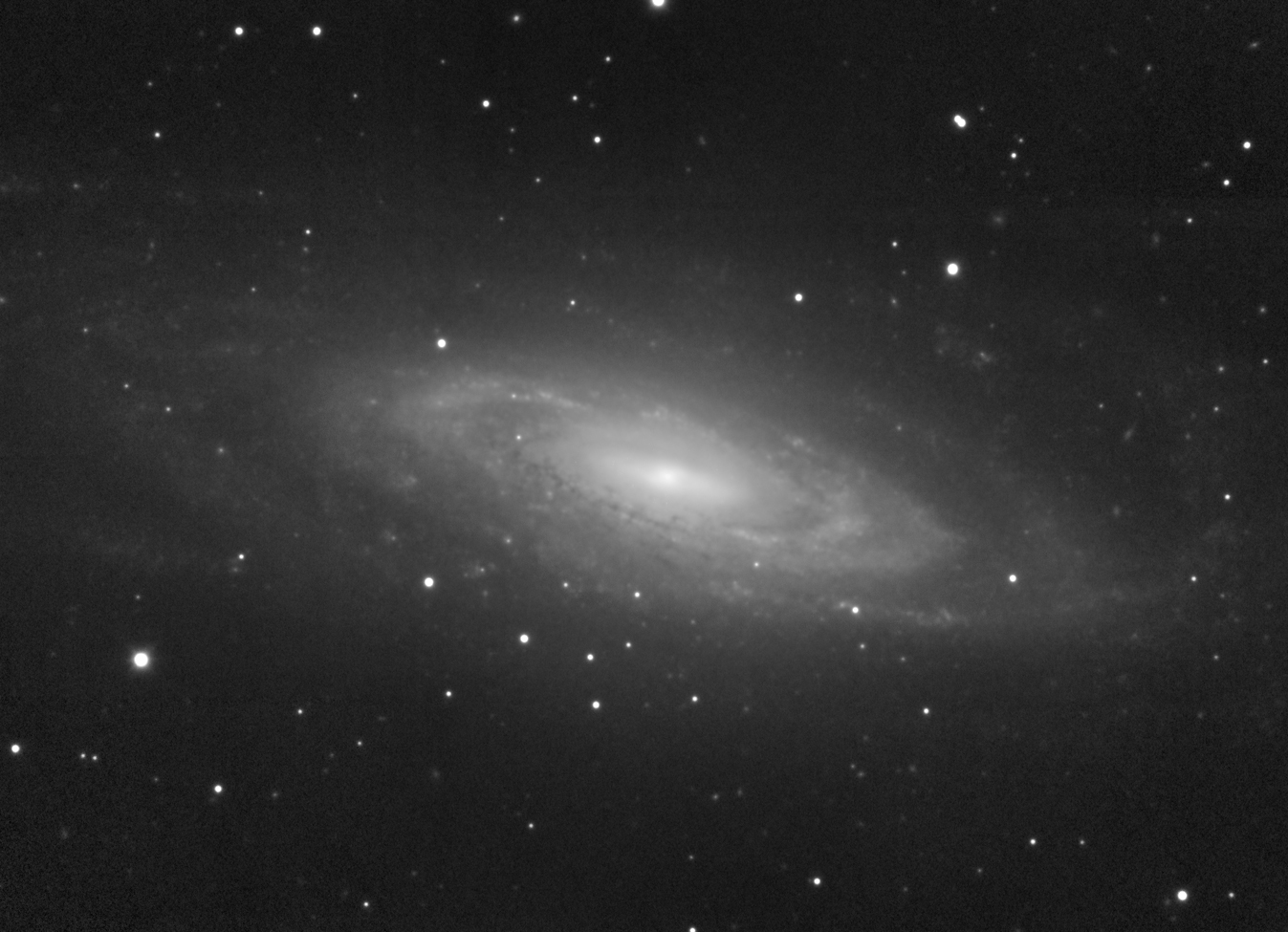
A 25-minute exposure of NGC 7331 in Pegasus, taken with LIRIS in Ks-band (image credit: Andrew Cardwell and Mischa Schirmer).
|
|
|
|
|
PSF
- The previously reported PSF anisotropies are gone. Likely cause was that the TCS has not entirely settled into tracking status after a dither offset was done, and the residual tiny oscillations caused image degradation in a few cases. We now routinely achieve pin-point sized round stars even in excellent seeing conditions (0.5" and less). In such cases LIRIS significantly undersamples the PSF with its 0.25"/pixel scale. The image below shows a coadded J-band image with 0.75" image seeing. The field centre is to the lower left, the upper right shows a corner of the covered field of view. The PSF is constant and uniform across the detector.
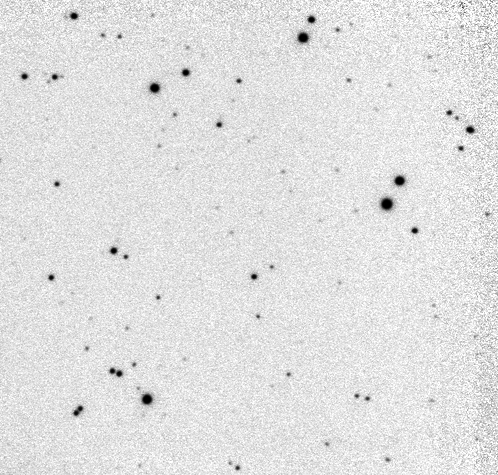
Field distortion
- Optical field distortion is very significant in the corners of the field of view covered by LIRIS. A full third order polynomial correction is necessary in order to correct for it. The image below illustrates the distortion field (click for full resolution):

Shown is the difference between a single exposure and the same exposure, resampled with a proper two-dimensional, third order polynomial (including cross terms). Thus, the black dots indicate stellar positions before the resampling, and the white dots show the stellar positions after correction.
The pattern is not radially symmetric.
- Correction of the field distortion is mandatory for extended targets and many other applications. This is due to the relatively large dither patterns that are usually used in near-IR observations for proper sky background subtraction and flat-fielding.
If the distortion is not corrected, very elongated stars and multiple images appear especially in the image corners, where the distortion terms grow very rapidly. This holds even for compact dither patterns that can be applied on largely empty fields. We illustrate this in the example below, where once a second-order polynomial (left panel) and then a third-order polynomial (right panel) was used for the correction:
| Second-order distortion polynomial |
Third-order distortion polynomial |
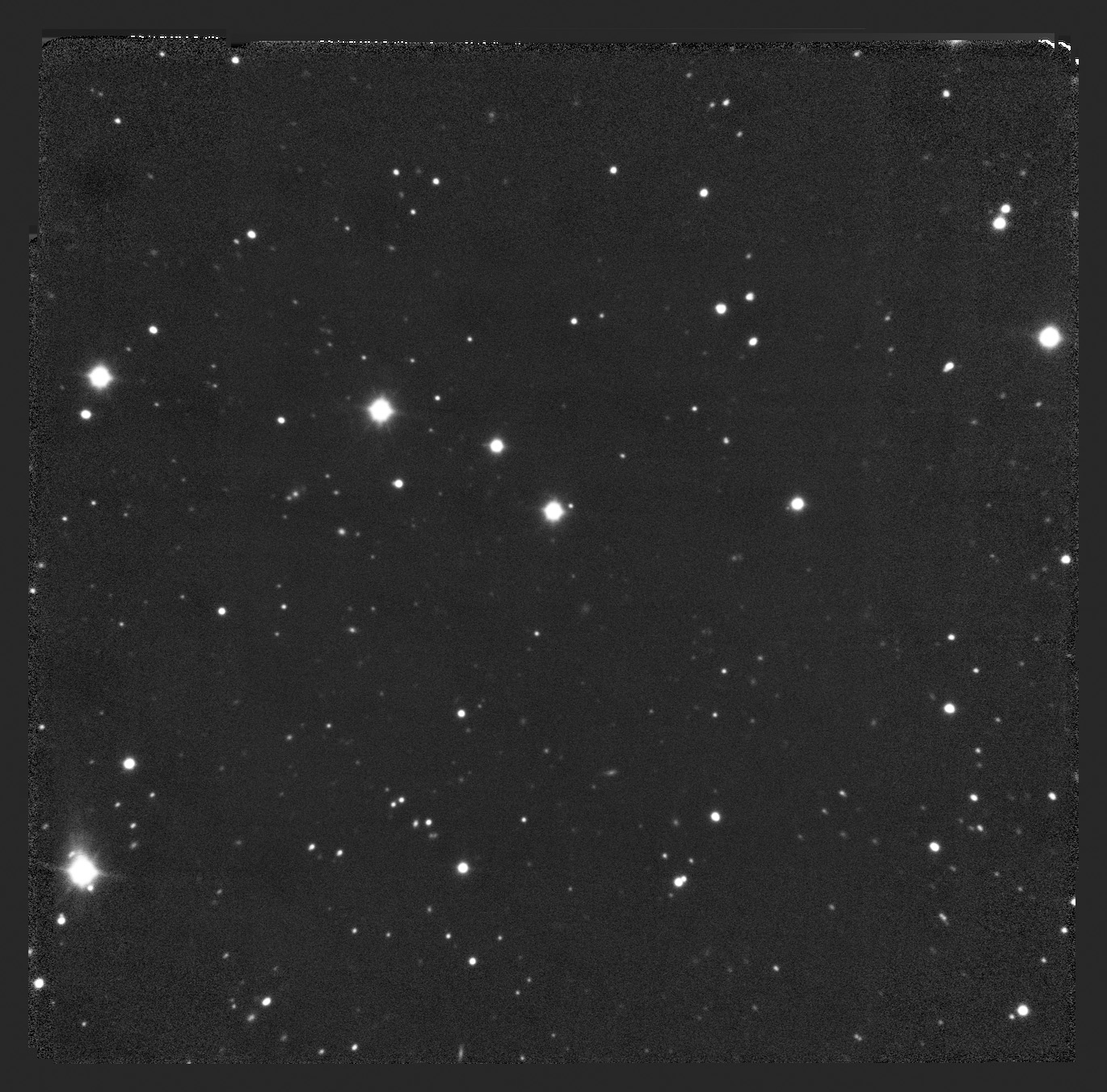 |
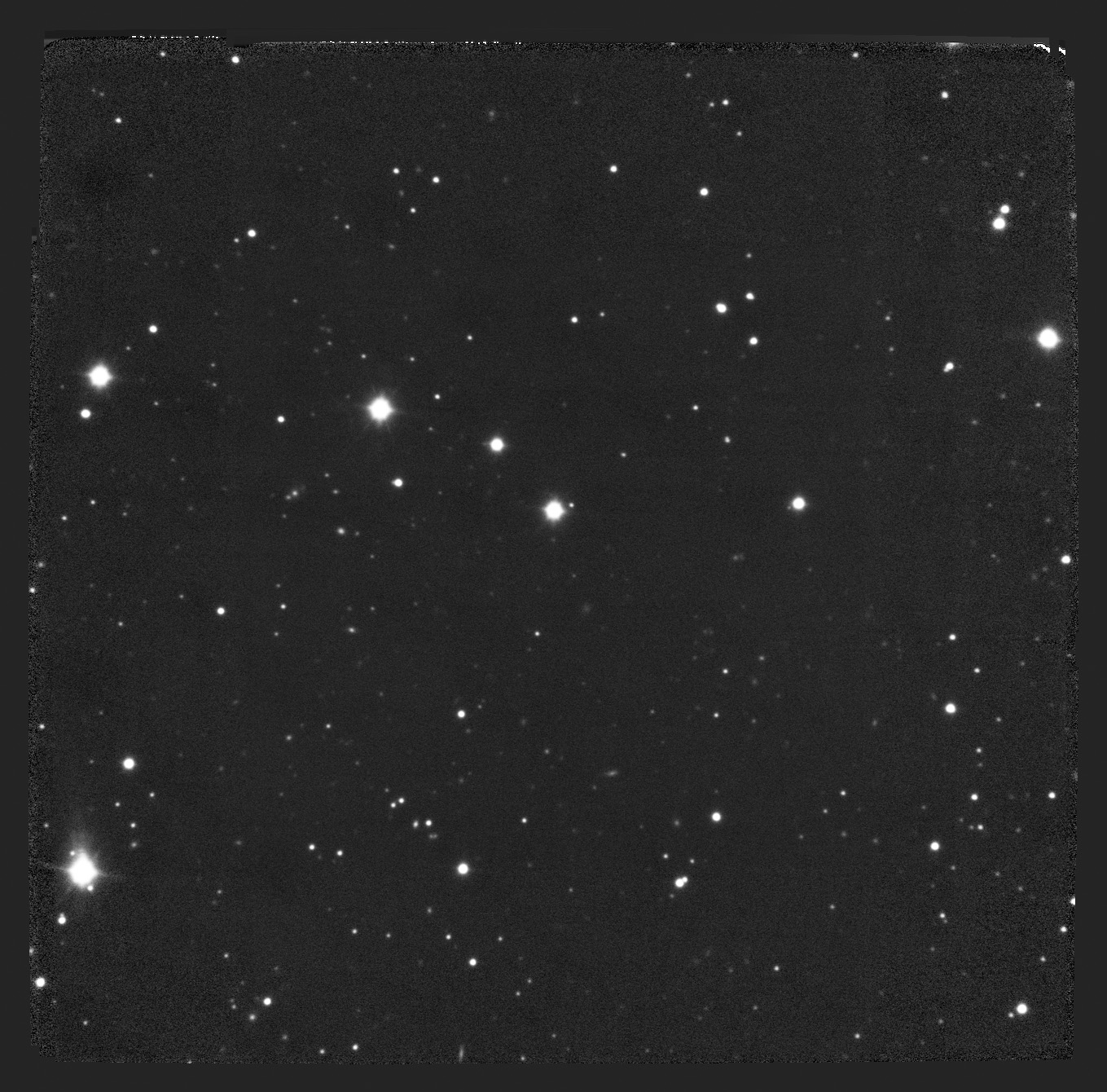 |
| Click on the images in order to see them full-sized. Correction with the second-order polynomial is clearly insufficient. Compare the lower right corners of these two images in the magnification below. |
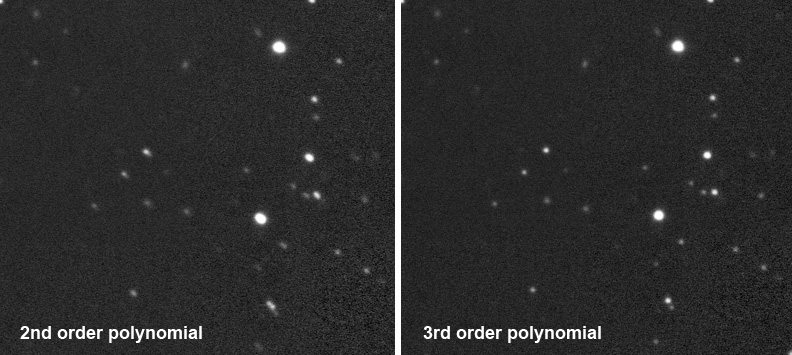 |
| The image seeing in the right image is 0.8". |
- We do not state any distortion coefficients here since these are subject to permanent change (rotation of the instrument, filter change, zenith distance etc). Instead, a fully integrated reduction pipeline (THELI) is available from ftp.ing.iac.es/mischa/THELI .THELI determines the required distortion correction from the data itself.
|
|
|

